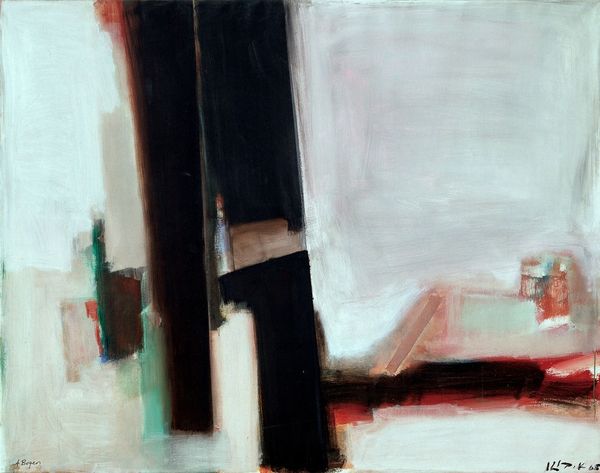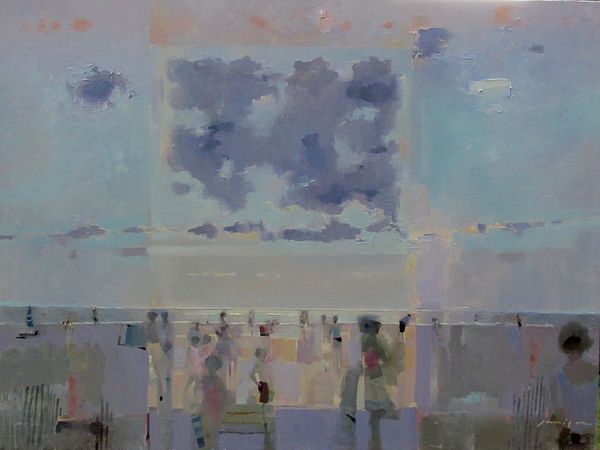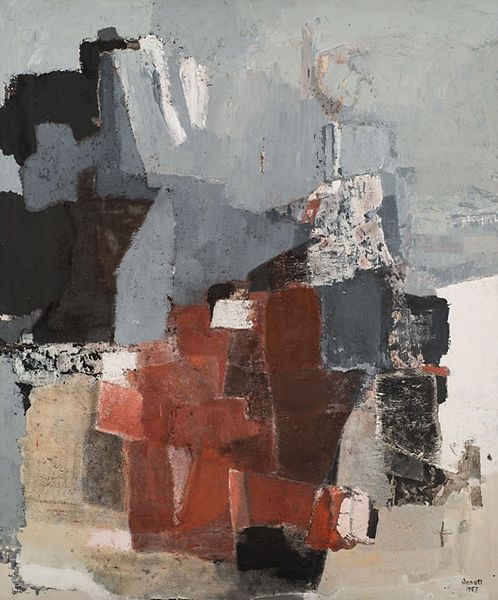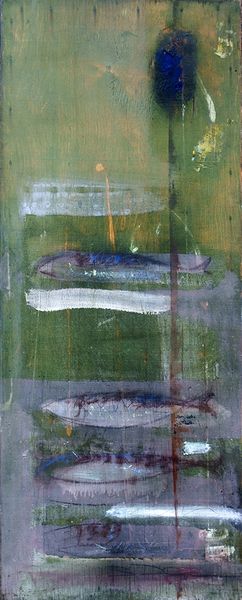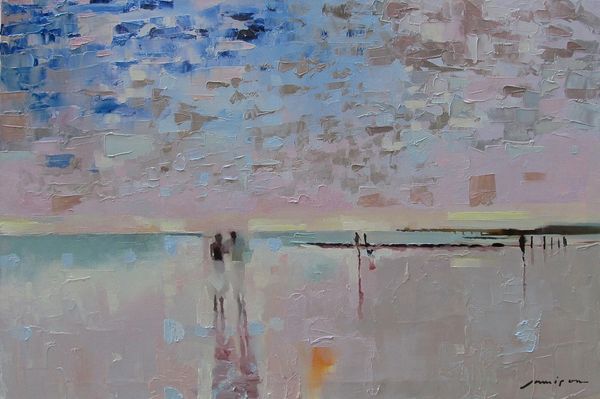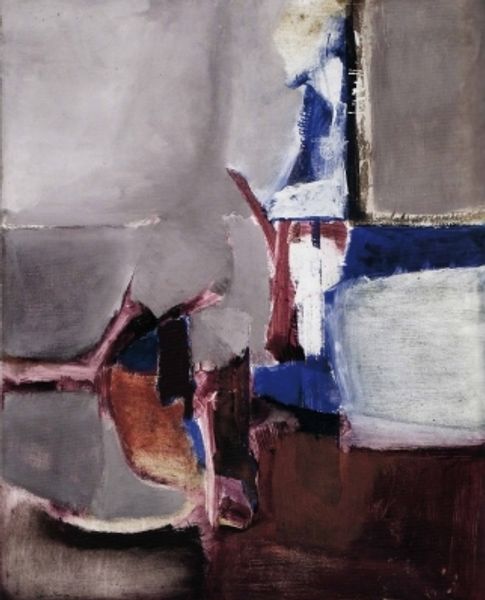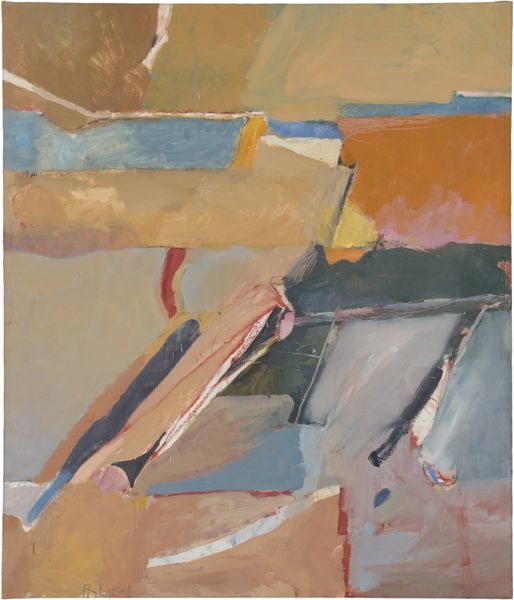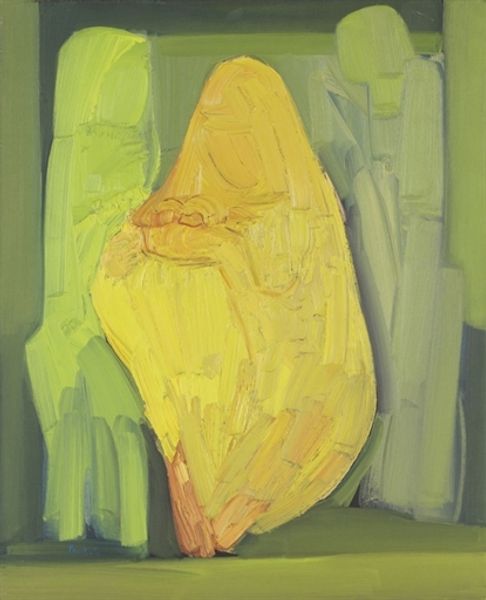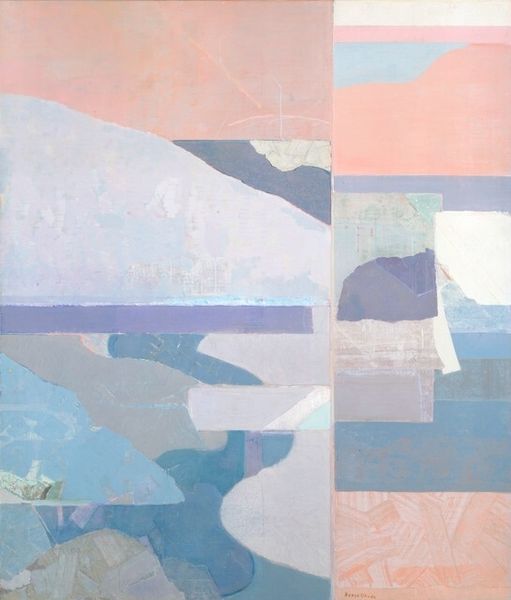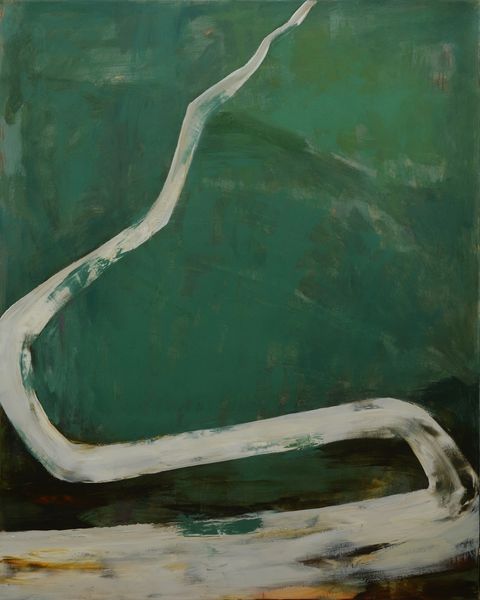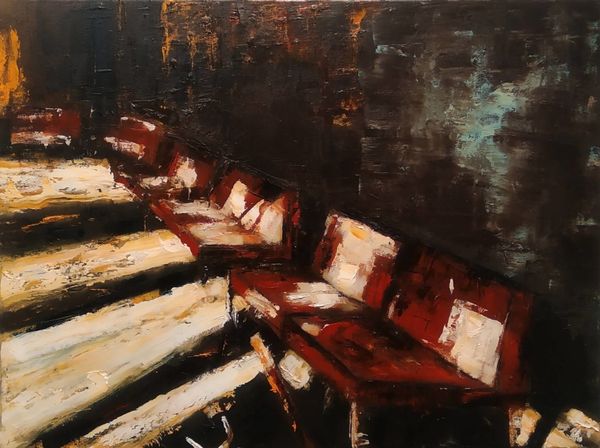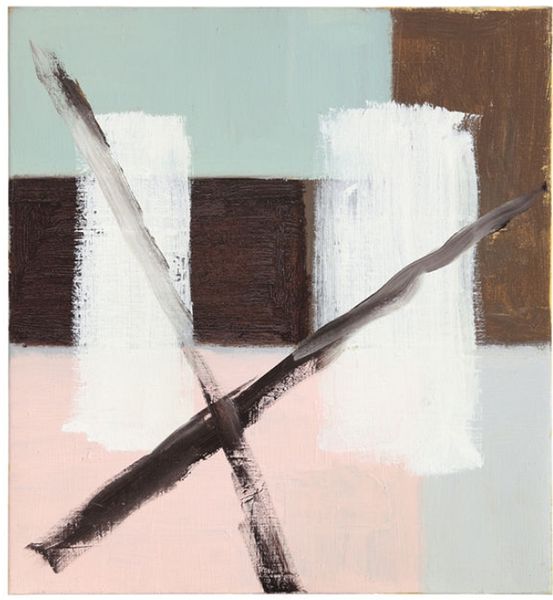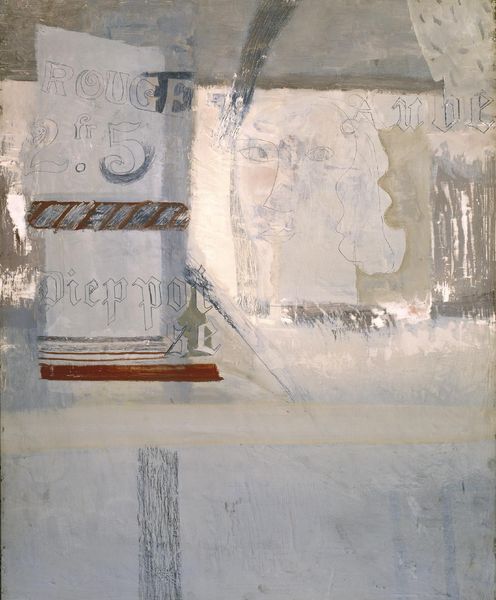
Dimensions: 35 x 33 cm
Copyright: Vasiliy Ryabchenko,Fair Use
Curator: This is Vasiliy Ryabchenko's "Shell," painted around 1970. It seems simple at first glance, but it holds a strange tension. What do you make of it? Editor: I’m immediately drawn to the impasto, the thick layering of paint, particularly on the shell itself. It almost feels like a sculptural object, but then flattened onto the canvas. I’m also curious about the choice of oil paints versus a more common material to depict a shell such as watercolour, I wonder if the idea here is to provide volume through medium as opposed to shape alone. Curator: It’s heavy, isn't it? And the color palette – pale pink and faded blue – almost makes it seem like a ghost of a shell. Like a memory. Or a fragile industrial waste... a consequence. Ryabchenko used matter-painting techniques that were evolving alongside, say, Arte Povera in Italy, but within a Soviet context, it took on a particular resonance, right? Editor: Absolutely. This isn’t just a still life, but an examination of the raw materials used. It makes me think about the labour involved, the mining of pigments, the processing of linseed oil, the canvas production – it forces us to think about where our stuff comes from. And that stark horizon line emphasizes this strange juxtaposition, with this manufactured, flattened plane resting beneath what could be ocean, earth, sky.. It all becomes material for consideration. Curator: I keep returning to the isolation of it. The shell exists as a single point against what appears to be nothing and nothing simultaneously. It's bleak, almost confrontational in a way that the Russian Avant-Garde did so well. I mean the materiality is so important because this one single shell against an artificial skyscape and foreground... evokes a lot of questions, mostly regarding what we leave behind or where do we begin. Editor: Indeed. What begins and what ends here is very potent! You feel how the act of production and creation of the image, is as significant as what the art is “representing." You nailed it when you mentioned how bleak yet so confronting the painting is. So is its impact, really. Curator: Well, that was, enlightening. So much for just a shell. I do enjoy unpacking paintings this way. It changes what you see, really. Editor: Absolutely. We start looking not just *at* it, but *through* it.
Comments
No comments
Be the first to comment and join the conversation on the ultimate creative platform.

